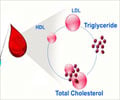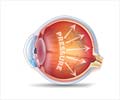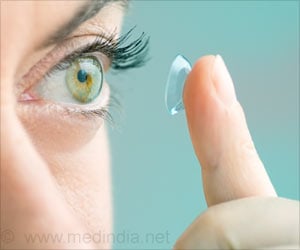Too much "good" cholesterol may raise glaucoma risk, while "bad" cholesterol could lower it. Discover the surprising link.
- High HDL cholesterol levels may raise glaucoma risk by 10%
- Higher LDL cholesterol is linked to an 8% lower risk of glaucoma
- Findings emphasize the complex role of cholesterol in eye health
Associations between serum lipids and glaucoma: a cohort study of 400 229 UK Biobank participants
Go to source).
Role of Cholesterol in Glaucoma
Cholesterol is typically divided into “good” (HDL) and “bad” (LDL) cholesterol. HDL helps remove excess cholesterol from the bloodstream, while LDL can contribute to plaque buildup in arteries. Surprisingly, new findings suggest that having high levels of HDL cholesterol might increase the risk of developing glaucoma, whereas higher levels of LDL cholesterol appear to reduce that risk.High levels of “good” cholesterol might increase your risk of glaucoma! #cholesterol #medindia’
Key Findings
Data from a large group of adults aged 40 to 69 showed that those with the highest levels of HDL cholesterol were 10% more likely to develop glaucoma compared to individuals with lower HDL levels. Conversely, participants with elevated LDL cholesterol were 8% less likely to develop glaucoma. Interestingly, those with higher triglyceride levels—a type of fat in the blood—had an even greater reduction in risk, up to 14%.
These patterns were more noticeable in individuals over the age of 55, while no significant connection was found among those aged 40 to 55. This suggests that age may play a role in how cholesterol impacts glaucoma risk (2✔ ✔Trusted Source
Neuroanatomy, Cranial Nerve 2 (Optic)
Go to source).
While the findings are intriguing, they don’t imply that having more LDL cholesterol is beneficial or that people should aim to lower their HDL levels. Several factors could influence these results, such as variations in cholesterol levels over time, lifestyle factors, and the accuracy of glaucoma diagnoses in large datasets. Cholesterol levels were measured only once in non-fasting conditions, which may not reflect long-term health.
What Does This Mean for Health?
These results highlight the complexity of cholesterol’s role in the body. HDL cholesterol is generally considered protective for heart health, but this study suggests that “too much of a good thing” might have unexpected effects in specific conditions like glaucoma. More research is needed to understand the biological mechanisms behind these findings.For now, maintaining balanced cholesterol levels through a healthy lifestyle remains important for overall health. Regular eye check-ups are essential, especially for older adults, to detect glaucoma early. While this study adds an interesting piece to the puzzle, it doesn’t change current health guidelines, and cholesterol management should still focus on heart health and overall well-being.
- Associations between serum lipids and glaucoma: a cohort study of 400 229 UK Biobank participants - (https://bjo.bmj.com/content/early/2025/01/14/bjo-2024-326062)
- Neuroanatomy, Cranial Nerve 2 (Optic) - (https://www.ncbi.nlm.nih.gov/books/NBK507907/)
Source-Medindia
















